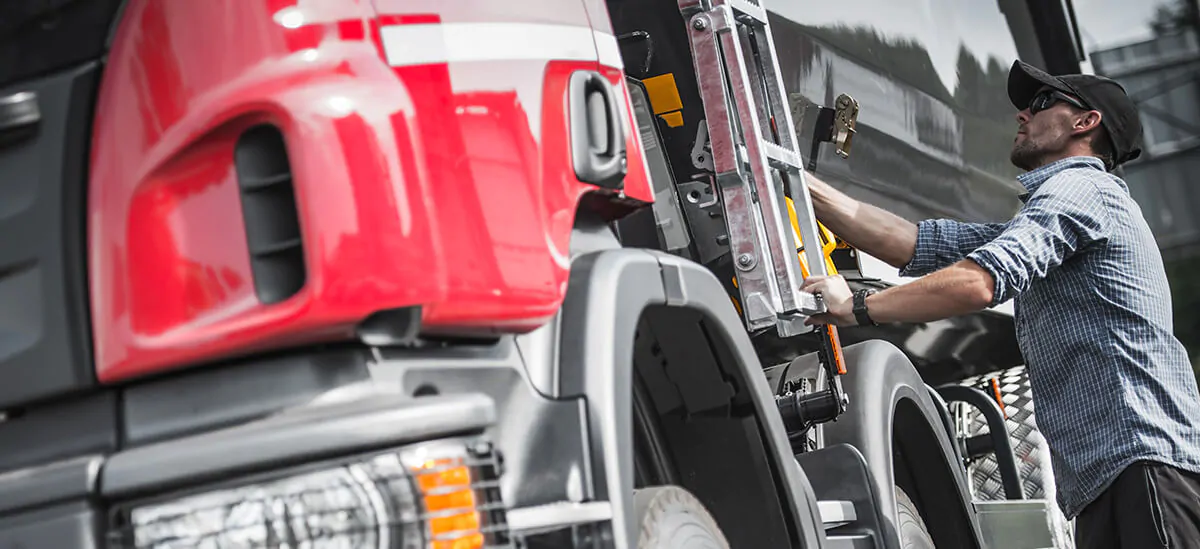Load security 2025: Practical tips to prevent shifts, spills and fines

Load security 2025
If a load moves, people get hurt and businesses get fined. DVSA has refreshed its guidance to make expectations crystal clear: every load must be restrained so it stays put during normal driving and emergency manoeuvres. The current “Securing loads on HGVs and goods vehicles” guide replaced older codes in July 2023 and was updated in December 2024, with DVSA reiterating the changes again in March 2025.

Who’s responsible (and what DVSA can do)
Responsibility is shared across operator, loader and driver. At the roadside, DVSA can issue prohibitions and penalties for insecure loads, and persistent non-compliance risks prosecution. Industry safety campaigns report around 2,000 prohibitions a year for insecure loads—proof this remains a top enforcement priority. DVSA’s enforcement sanctions policy sets out how examiners decide on action.
The simple design rule: 1g forward, 0.5g sideways and rear
When you plan restraint, design it to resist 100% of the load forward (≈1g) and 50% sideways and rear (≈0.5g). That benchmark appears across UK guidance and load-restraint practice and is a solid shorthand for everyday planning.
Curtain-sider pitfalls to avoid
Curtains are for weather protection, not restraint. Unless the vehicle is specifically engineered and marked to EN 12642-XL (and the load positively fills the structure as intended), treat a curtain-sider like an open flatbed: block, strap or otherwise restrain the load independently. Don’t assume “load-bearing curtains” will save you at the roadside.
Choosing the right restraint for the job
Friction and blocking
Use anti-slip mats, clean decks and tight packing to increase friction. Combine with headboards, side raves and chocks to stop movement before it starts.
Lashings
Select straps or chains with adequate lashing capacity (LC). Calculate how many you need to meet the 1g/0.5g requirement, and use approved anchor points only.
Attachment points
Ensure points are rated and maintained; avoid makeshift anchors that could tear out under load. Recent updates emphasise that attachment points must be strong enough for the expected loads.
Mixed and odd-shaped loads
Build restraint for the heaviest piece and prevent gaps from opening up as you unload partial deliveries. DVSA’s guide includes sections on large loads, friction and covering—use them.
Quick driver checklist before you roll
- Know the plan. What’s the restraint method and how does it meet 1g/0.5g? If it isn’t obvious, ask the loader.
- Inspect the gear. Check strap condition, edge protection, anchor points and headboard integrity. Replace damaged kit—don’t “just send it.”
- Eliminate gaps. Tight pack, block and use dunnage so nothing can slide or topple.
- Secure partial drops. After each delivery, re-check that remaining items are still blocked and strapped for the rest of the journey.
- Curtain-sider reality check. Curtains closed? Good. Straps on and load restrained? Essential.
What to document to satisfy inspectors
- Load plan and method (blocking, friction aids, lashings and counts).
- Equipment ratings (strap LC, chain grade, anchor ratings).
- Vehicle features used (headboard rating, EN 12642-XL marking if applicable).
- Walk-round photos before you leave the bay—especially for high-risk or unusual loads.
These notes align with how DVSA examines cases and can help you evidence that your approach was competent and proportionate.
Real-world enforcement: why details matter
Recent cases show examiners still find pallets and cages left free to move inside curtains. That’s a fast track to a prohibition and penalty—exactly the scenario you avoid by combining friction, blocking and lashings every time.
Training and policy refresh
- Update your policy against the Dec 2024 DVSA revisions and brief planners, loaders and drivers.
- Toolbox talks: 15-minute refreshers on the 1g/0.5g rule, attachment points and curtain-sider myths.
- Audits: Spot-check bays and vehicles weekly; record defects and swap out tired straps and edge protectors.
Bottom line
Load security isn’t paperwork—it’s physics plus discipline. If you design for 1g forward and 0.5g sideways/rear, treat curtains as weather protection, and document what you’ve done, you’ll drastically cut the risk of shifts, spills and fines while protecting your people and your brand. Start with today’s DVSA guide, update your policy, and make the driver checklist non-negotiable.